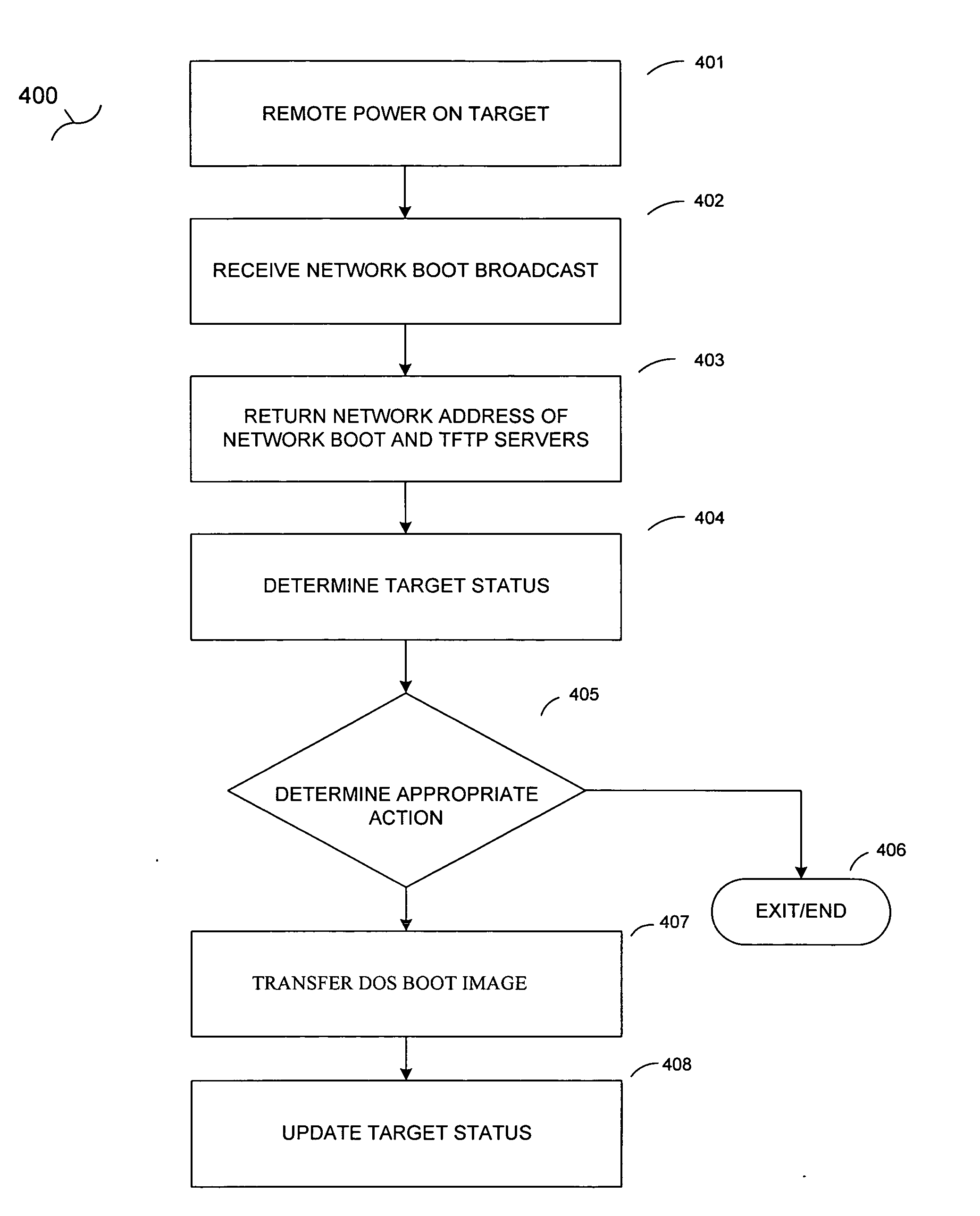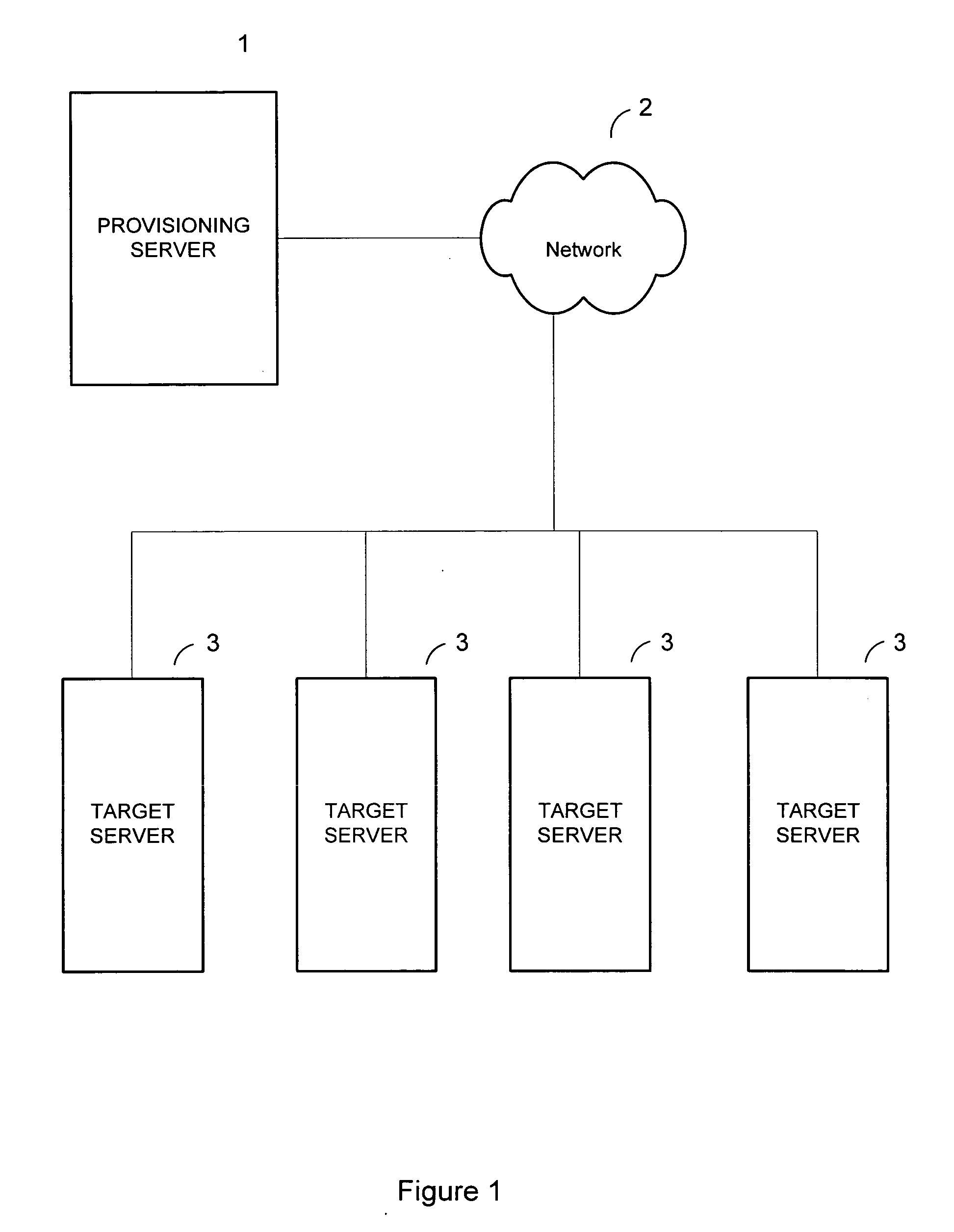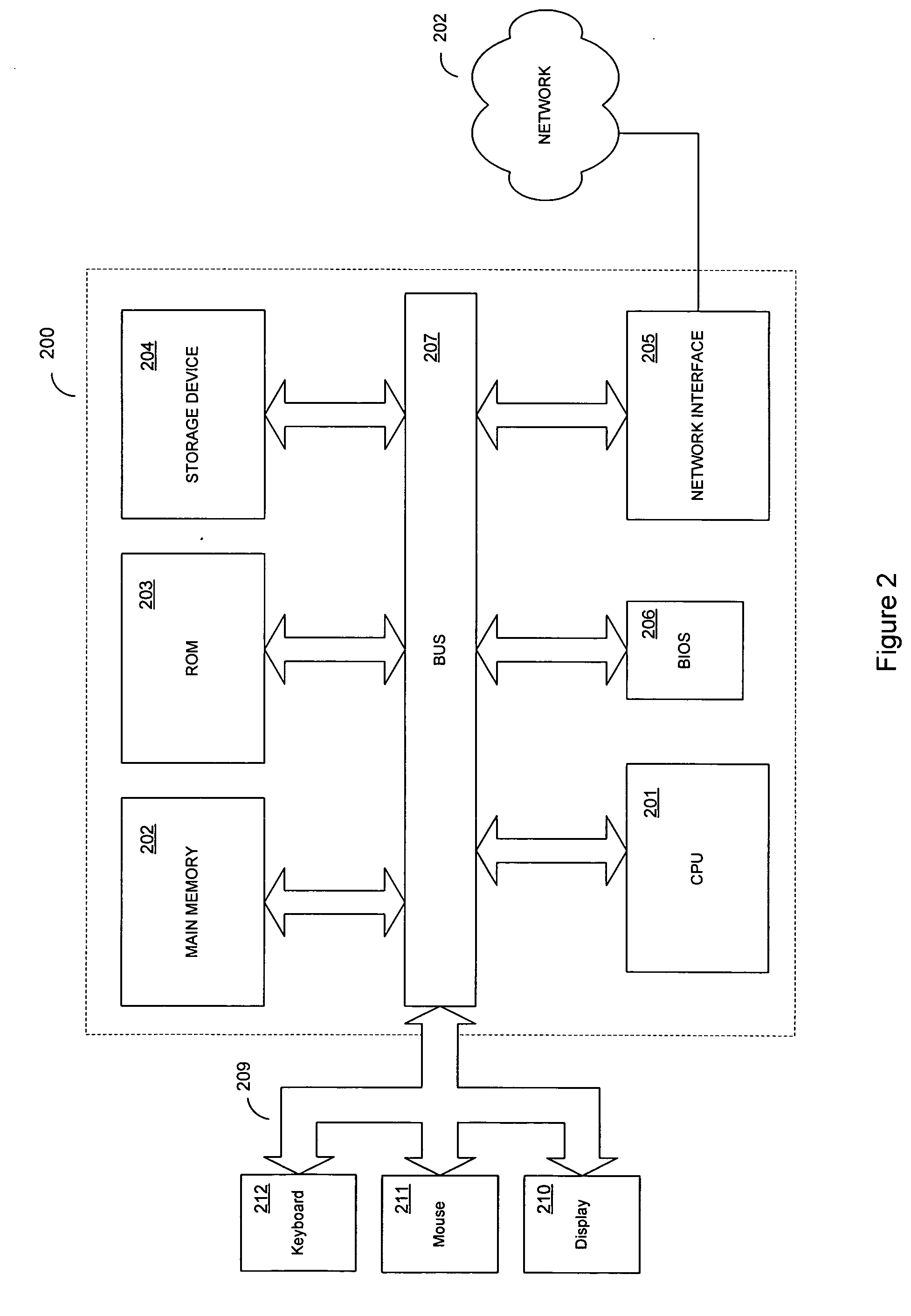Method of applying constraints against discovered attributes in provisioning computers
a technology of constraint and discovery attribute, applied in computing, instruments, electric digital data processing, etc., can solve the problems of inability to work for the intended target, inability to install commercial software products, and inability to meet the requirements of image based solutions,
- Summary
- Abstract
- Description
- Claims
- Application Information
AI Technical Summary
Problems solved by technology
Method used
Image
Examples
example 1
[0077] The present example uses a typical company with multiple departments, such as marketing, sales, finance and IT, having multiple servers dedicated to specific departments within the company.
[0078] Group 1 has six servers whose primary purpose is to run software for the company's marketing department. Unless noted as otherwise, each of the six marketing servers has 1 GB RAM, 80 GB hard drive and an Intel Pentium™ 4 2.4 GHz processor. The six servers consist of: [0079] Two Dell™ 2550 (One Dell 2550 has 256 MB RAM) [0080] One Compaq™ ProliantDL360G2™[0081] One IBM® Netfinity™ 6000 [0082] One server called “WhiteBox1” assembled from off the shelf components.
[0083] Group 2 consists of four servers dedicated to the information technology (IT) department. Unless noted as otherwise, each of the six marketing servers has 1 GB RAM, 80 GB hard drive and an Intel Pentium™ 4 2.4 GHz processor. The four servers for group 2 consist of: [0084] Two Dell 2550 [0085] Two Compaq ProliantDL360G2...
example 2
[0161] As described above in connection with FIG. 12, the results of a hardware inventory are stored in a systems file in the state and policy database. In the presently preferred embodiment the systems file is implemented as an XML file SYSTEMS.XML. An example SYSTEMS.XML file for a Compaq Proliant DL360G2 is given:
[0162] SYSTEMS.XML
12345 6 MAC=“00-08-02-A2-5A-20” / >7 AAEAEUJNCA8 9 000802A25A2010 11 FFFFFFFFFFFFFFFFFFFFFFFFFFFFFFFF12 13 14 15 16 17 26214418 25619 Single-bit ECC20 121 122 YES23 YES24 225 26 27 Speed=“1400” MaxSpeed=“1660”28 Version=“” / >29 30 31 32 Device=“Smart Array 5i Card”33 Sub VendorID=“0E11” SubSystemID=“4080” SubUnits=“0” / >34 35 36 37 38
[0163] In addition to the vendor, model and MAC address, the SYSTEMS.XML file in the present example includes BIOS information at line 16, system motherboard information at line 14, chassis information at lines 13 and 15, processor information including the make, model CPUID, processor speed and ver...
example 3
[0166] Before a target computer is entered into the state machine by the provisioning program its discovery record is always read from the discovery file (DISCOV.XML) by the provisioning agent into a variable called BUILD-TYPE. The discovery file also stores information related to the type of installation this target computer will undergo. There are two types of installations. In no particular order, a first type of installation is referred to as cloning or image based. In image based provisioning the target computer receives a “snapshot” (an image of a hard drive) of a previously built similar device. To install the image on the target computer the provisioning agent of the present invention uses a vendor-imaging tool to lay down the bits of the image on the hard disk. This allows cloning of multiple devices utilizing the same image, and has the advantage of being, relatively, quick. According to the present invention, cloning or image based installations are accomplished by having...
PUM
 Login to View More
Login to View More Abstract
Description
Claims
Application Information
 Login to View More
Login to View More - R&D
- Intellectual Property
- Life Sciences
- Materials
- Tech Scout
- Unparalleled Data Quality
- Higher Quality Content
- 60% Fewer Hallucinations
Browse by: Latest US Patents, China's latest patents, Technical Efficacy Thesaurus, Application Domain, Technology Topic, Popular Technical Reports.
© 2025 PatSnap. All rights reserved.Legal|Privacy policy|Modern Slavery Act Transparency Statement|Sitemap|About US| Contact US: help@patsnap.com



